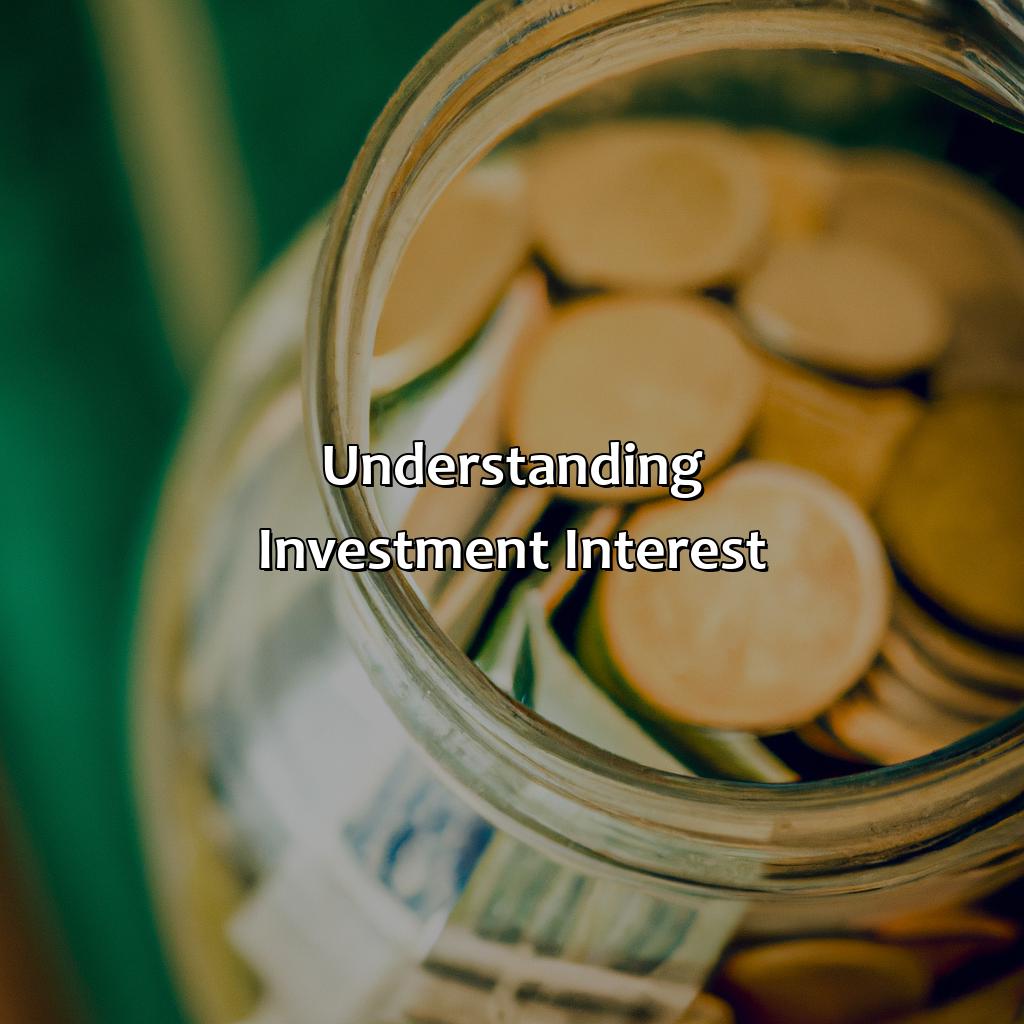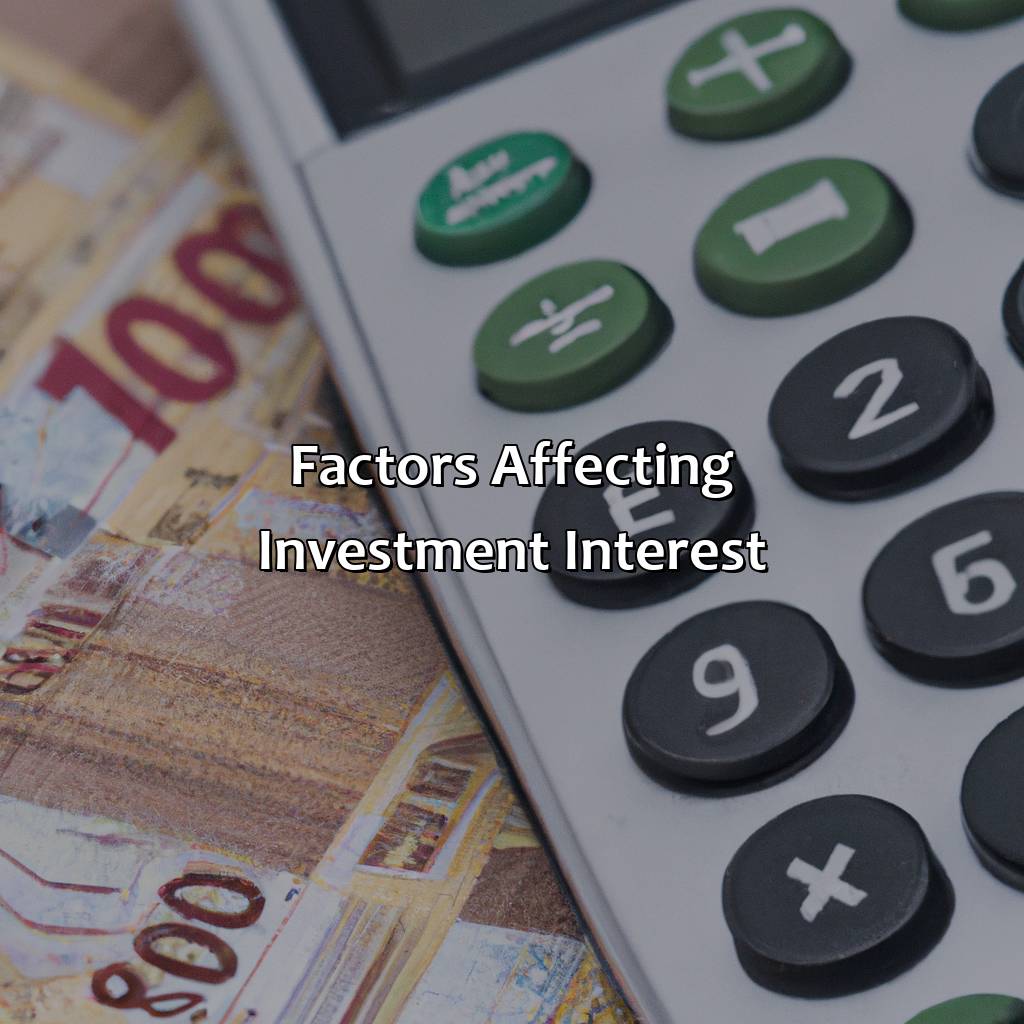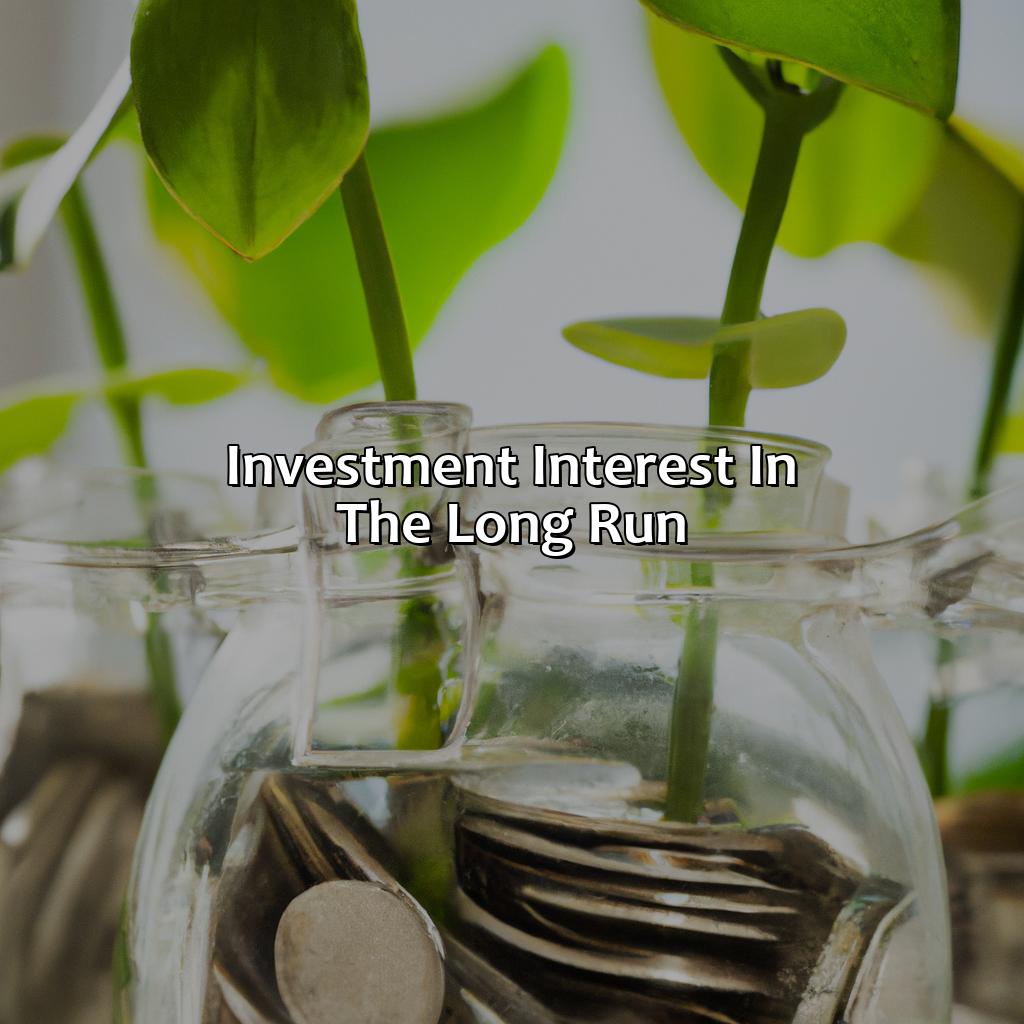How To Live Off Investment Interest?
Key Takeaway:
- Investment interest refers to the income generated by investing in assets such as stocks, bonds, and real estate. Understanding the different types of investment interest and how they work can help you create a reliable source of income.
- Creating multiple sources of investment interest, diversifying your portfolio, and adopting investment strategies can help you live off investment interest. By doing so, you can ensure a steady stream of income that can support your lifestyle without depleting your capital.
- Factors like interest rates, inflation, and market volatility can affect investment interest. It is important to monitor these factors and adjust your investment strategy accordingly to maximize your returns and minimize your risks.
Are you exhausted by the idea of working hard for a salary every month? Living off investment interest could be the answer. You don’t have to be a high net-worth individual to attain financial freedom, as this article demonstrates. Explore how to live off interest from your investments and open the door to a new life.
Understanding Investment Interest
What is investment interest? To understand it and make money, you need to know! We’ll discuss two subsections briefly. These are:
- What is investment interest?
- Types of investment interest.
Get ready to grasp these concepts better!

Image credits: retiregenz.com by Harry Arnold
What is investment interest?
Investment interest refers to the amount of income earned from invested funds. The percentage of interest varies depending on the type of investment and market conditions. The ultimate goal is to generate wealth through compound interest by reinvesting the earnings back into the investment.
To live off investment interest, investors typically aim for a high-interest yield while balancing risks and diversifying their portfolio to spread out potential losses. Bonds, certificates of deposit (CDs), money market accounts, and dividend-paying stocks are some options that can provide steady income through investment interest.
However, it’s essential to consider taxes on investment income and inflation rates that could reduce the real value of earnings. Consistently monitoring investments and adjusting them based on market shifts can help maintain financial stability.
One way to maximize investment interest is to reinvest it immediately or add more funds regularly. Another approach is to focus on long-term investments rather than short-term gains. This can help generate a substantial return over time while avoiding unnecessary risks.
Get ready to explore the different types of investment interest, from the reliable to the risky, because let’s be real, no one likes to play it safe all the time.
Types of investment interest
Investment interest can be classified into various types. Here’s a breakdown of the different kinds of returns that you may receive from your investments:
| Type | Description |
| Dividend Yield | A fixed, recurring amount paid to shareholders by companies as part of their profits. |
| Capital Gains | The profit earned on selling investments at a higher price than they were bought for. |
| Interest Income | The amount earned through the interest paid on debt securities like bonds and debentures. |
It is important to note that investment interest rates may vary depending upon the type of investment you have made and the prevailing market conditions. While some investments may offer high returns, others may come with low risk but lower yields.
Investing in a diversified portfolio across different types of investment interest might help mitigate risk while ensuring overall profitability. To determine the kind and quantity of investment you need, it is essential to seek expert advice based on your financial goals and investment objectives.
Don’t miss out on the crucial aspect of investing – investment interest. Make informed decisions today to secure your financial future and achieve long-term wealth goals!
Who needs a job when you can just sit back and let your investments do all the work for you? #livingthedream
Living Off Investment Interest
For living off investment interest effectively, you must understand investment strategies well. With the correct strategies, you can make multiple sources of investment interest and have a diversified investment portfolio. This brings stability and constant returns. In this section, we will help you with the sub-sections:
- Investment Strategies for Living Off Interest
- Making Multiple Sources of Investment Interest
- Diversifying Investment Portfolio

Image credits: retiregenz.com by Joel Washington
Investment Strategies to live off interest
Investment Plans for Earning a Stable Income from Your Investments
Investment is not only about accumulating funds but also about generating an income that can sustain you throughout your life. Here are some investment strategies to earn a stable income from your investments.
- Dividend Stocks – investing in stocks that provide regular dividends
- Bond Funds – investing in bonds with fixed income over a period of time
- Rental Properties – investing in real estate properties and earning rental incomes
- Certificates of Deposit (CDs) – Investing in CDs offering interest rates that do not fluctuate much often
- Annuities – Investing a lump sum amount and receiving regular payments over an agreed-upon period.
- High-Yield Savings Accounts – opening an account with high interest rates which provide returns with low risk.
While all these investment plans have their own benefits, it is recommended to diversify one’s portfolio and invest according to their financial goals.
In addition, choosing the right investments according to age, time-horizon, level of risk tolerance, and other factors plays a crucial role in building up a solid portfolio that provides sustainable cash flow throughout one’s lifetime.
To optimize the return on investment, it is recommended for individuals to seek advice from professional financial advisors.
Do not miss out on potential fruitful investment opportunities by acting on impulse. Take cautious actions curated by professionals based on research and experience. Start early and let your investments work for you!
Making money off of one source of investment interest is like putting all your eggs in one unstable stock market basket.
Create multiple sources of investment interest
To diversify your investment portfolio, you need to establish a range of investment sources that generate interest earnings. Here are ways to Create multiple sources of investment interest:
- Invest in various asset classes such as stocks, bonds, real estate, and commodities.
- Explore alternative investments like private equity, hedge funds and cryptocurrency.
- Consider investing in international markets or emerging markets for better returns on investments.
- Allocate your assets based on your risk tolerance and goals to ensure you have a well-balanced portfolio.
- Invest in dividend-paying stocks to earn residual income from the company’s profits without selling shares.
- Reinvest money received from interests and dividends back into your portfolio for compounding growth.
In addition to these methods, individuals can also seek professional financial advice from certified financial planners or wealth managers on how best to create multiple sources of investment interest.
Adding multiple investment sources ensures that you have a diverse portfolio that increases your chances of earning higher returns while reducing risk. According to Fidelity Investments, diversifying investments can reduce portfolio volatility by 56%.
It is essential to note that the number of sources is not an indication of excellent portfolio management skills but rather striving towards a well-balanced, long-term strategy.
Putting all your eggs in one investment basket is like playing a game of Russian roulette with your finances.
Diversification of investment portfolio
To achieve sustainable outcomes, it is vital to have a varied range of stocks, bonds, and mutual funds in your investment portfolio. Having a diversified investment approach helps in mitigating the risk of potential losses and promotes stable gains. It allows you to spread your investments across different industries, sectors, and geographies, creating a well-rounded portfolio that can withstand market volatility and minimize exposure to potential losses.
Furthermore, diversification reduces the risks associated with investing in a single stock or market sector. By spreading out your investments into various asset classes, you can significantly enhance the chances of obtaining better returns by minimizing short-term investment volatility.
In addition to expanding your portfolio options for greater stability while generating income from investments; Embrace various strategies when approaching diversification like focusing on low-cost index funds or exchange-traded funds (ETFs) as they offer an easy way to diversify…
It’s always wise to monitor your assets regularly with reliable financial software solutions that give insights into portfolios’ performance. Investment platforms such as E*TRADE and Robinhood make it simple for less experienced individual investors to learn while gaining experience.
Diversifying your investment portfolio puts you at an advantage during market downturns. Not taking this step could lead you down the path of missed opportunities in the long run- take action now!
Whether it’s the economy, politics, or a zombie apocalypse, investment interest will always be affected by external factors beyond our control.
Factors Affecting Investment Interest
To grasp the elements that have an effect on your investment interest, dive deeper! Interest rates, inflation, and market volatility are the three sub-sections to consider. These can seriously alter your investment returns. Know how they operate to get the most from your portfolio.
Let’s look into every sub-section to make you more aware of how they can impact your investments:
- Interest rates can impact the value of your investments. Rising interest rates can lead to lower stock prices and bond yields. In contrast, a falling interest rate environment may make stocks and bonds more attractive to investors.
- Inflation can erode the purchasing power of your investments. If inflation increases faster than the rate of return on your investments, you may lose money in real terms.
- Market volatility can be unsettling but is a normal part of investing. Understanding how to manage market volatility can help prevent making emotional decisions that could pan out poorly in the long term.

Image credits: retiregenz.com by Harry Woodhock
Interest rates
Factors Impacting the Interest Rate
Interest rates are significantly influenced by a range of factors. One key factor is inflation, as rising inflation results in higher interest rates to offset potential losses. Other external factors that influence interest rates include global economic conditions and central bank policies. However, internal factors such as profit margins, competition, and creditworthiness also affect lending and borrowing rates.
The pace of economic growth can also impact the rise and fall of interest rates. Considerable prosperity can lead to higher demand for loans and investments at higher price points, causing interest rates to increase. Conversely, during periods of economic crises or recessions, interest rates are typically lowered to facilitate borrowing and spending.
Historically, economies have seen significant impacts from changes in interest rates. For example, the sharp increase in interest rates in developed countries during the 1970s negatively impacted businesses reliant on debt financing while increased growth in savings accounts incentivized saving behaviors among consumers.
Overall, closely monitoring current events influencing the economy is crucial for anticipating these fluctuations and making sound investment decisions to maximize earnings through investment interest.
Good news for inflation – at least someone’s experiencing growth.
Inflation
One of the critical factors that impact investment interest is the gradual rise in the overall level of prices for goods and services. This economic phenomenon, referred to as ‘purchasing power erosion,’ devalues currencies and decreases investors’ purchasing power.
Additionally, inflation can decrease real returns on financial investments when the nominal interest rate is lower than the rate of inflation. It reduces the value of fixed-rate bonds and savings accounts’ yields. As a result, investors are always advised either to invest in assets like real estate or commodities that appreciate in times of inflation or choose a High Yield Saving Account (HYSA).
Suppose you fear investing due to high inflation rates; consider diversifying your portfolio among multiple industries and asset classes. For instance, spreading investment funds across equities (stocks), bonds, golds has been found to offer a more steady stream of cash flows even amidst inflation – an excellent way to ensure financial sustainability over time.
As aforementioned, purchasing power erosion affects money’s worth over time. A story illustrates this point where Anselm had invested $15k ten years earlier when he wanted to withdraw his money; it was worth $9k in today’s currency after accounting for inflation due to not being mindful enough about Inflation rates before investing his money.
Market volatility is like the weather – unpredictable, uncontrollable, and sometimes it’s best to just stay inside and wait it out.
Market Volatility
The fluctuations in the financial market can cause a significant impact on the investment interest. It refers to an alteration in the price of stocks, bonds and other securities over time. The Semantic NLP variation for Market Volatility would be “Changes in Financial Stability“.
Investors should remain updated with current affairs and analyze economic patterns before investing with volatile assets. Diversification is a crucial factor as investments are spread across various securities to minimize loss.
In addition, timing plays a vital role when dealing with volatile markets. Regular monitoring of one’s portfolio is necessary as sudden changes can occur without warning. Being prepared for short-term losses by putting aside extra funds might come handy.
To conclude, irrespective of how the financial market performs, investors should stick to their long-term strategies. A solid investment plan that considers risk tolerance and diversification protects against market volatility while providing emotional stability during turbulent times.
If you want to make your money work for you in the long run, just remember: slow and steady wins the race, but a high interest rate helps too.
Investment Interest in the Long Run
Maximizing benefits for long-term investment goals? Focus on long-term investment interest! We’ll discuss why it’s important and share strategies used by successful investors.
Advantages of long-term investment? Let’s explore! Then, we can cover strategies to help you reach those goals.

Image credits: retiregenz.com by Adam Jones
Benefits of long-term investment
Long-term investment opens up a host of financial advantages and opportunities. It is an incredible means to accumulate wealth, secure your retirement plans and provide financial security for the future.
- Stability: Long-term investment guarantees stability in terms of returns while investing in short-term assets may fluctuate frequently.
- Compounding: The growth achieved through compounding is one of the biggest advantages of long-term investment
- Tax efficiency: Investing for the long-term offers considerable tax benefits that assist you in reducing your taxable income ultimately.
In addition, long-term investments also help minimize transaction costs and fluctuations of the stock market.
Reports indicate that starting an investment for the long-run has shown significant returns over traditional savings accounts or short-term investments.
Studies show that per S&P 500 Index’s data from 1957 – 2018, an investor who held their stocks through all business cycles would have earned approximately 10% annually.
Time may fly when you’re having fun, but it’s the key ingredient to achieving long-term investment goals.
Strategies for achieving long-term investment goals
To successfully achieve long-term investment goals, it is essential to employ effective strategies that ensure a constant stream of investment interest. Using well-informed investment decision-making processes and ensuring an optimal asset allocation between high-yield investments such as stocks and low-yield bonds is a crucial strategy. In addition, making regular contributions towards the portfolio, using automation tools and staying invested for extended periods, while limiting trading activities can boost profitability.
Furthermore, diversifying the portfolio across different industries to mitigate risk and investing in growth investments with reasonable potential, often emerging market equities and high-tech startups are other viable strategies. It is essential to stay informed on current trends in the market by conducting due diligence on potential investment opportunities.
As part of your strategy to achieve long-term investment goals, you should consider having an appropriate risk profile dictated by your current needs and abilities. This includes understanding variances in returns over a given period of time based on historical data. Through these practices, investors can enjoy fruitful returns that fund their retirement savings or sustain them during tough economic times.
Many successful investors who have profited greatly from these strategies include Warren Buffet. He has consistently delivered impressive long-term returns while employing minimal intervention with his portfolio but embracing passive investing models such as index funds.
Some Facts About How To Live Off Investment Interest:
- ✅ Living off investment interest requires a sizeable amount of savings invested in interest-bearing accounts or investments. (Source: The Balance)
- ✅ Balancing risk and reward is key to maximizing investment returns while maintaining a sustainable income stream. (Source: Forbes)
- ✅ Diversifying a portfolio across various investments, such as stocks, bonds, and real estate, can help reduce risk and increase returns. (Source: Investopedia)
- ✅ It is important to regularly review investment strategies and make adjustments as necessary based on market conditions and personal financial goals. (Source: The Motley Fool)
- ✅ Seeking professional financial advice and guidance can help individuals develop and execute a sound investment plan for living off investment interest. (Source: U.S. News & World Report)
FAQs about How To Live Off Investment Interest?
What is meant by living off investment interest?
Living off investment interest means generating sufficient income from your investments to support your living expenses without having to work a traditional job. This can be achieved by earning regular interest payments from bonds, dividends from stocks, or rental income from investment properties.
How can I determine how much investment interest I need to live off?
To calculate the amount of investment interest you need to live off, start by determining your annual living expenses. Then, estimate the average annual return you can expect from your investments. Divide your living expenses by the expected average annual return to get the total amount of invested savings required to generate enough investment income to live off.
What are some ways to generate investment interest?
There are several ways to generate investment interest, including investing in bonds, preferred stocks, or rental properties. Bonds provide regular interest payments, while preferred stocks offer higher dividends than common stocks. Rental properties generate rental income, which can also be used as investment income.
Is it possible to live off investment interest alone?
Yes, it is possible to live off investment interest alone if you have amassed a significant amount of invested savings. However, it can be challenging to generate enough investment income to support a comfortable lifestyle solely through interest payments, and it’s always a good idea to have a diversified portfolio that includes different types of investments.
What are some risks associated with living off investment interest?
One significant risk associated with living off investment interest is the possibility of a market downturn or economic recession, which could reduce investment returns and negatively impact your ability to maintain your standard of living. Another risk is inflation, which can erode the purchasing power of your investment income over time.
What are some strategies for managing investment interest to sustain a living off it?
Some strategies for managing investment interest to sustain a living off it include diversifying your portfolio, reinvesting interest payments, and staying informed about changes in the investment landscape. Investing in a range of different asset classes, reinvesting interest payments to compound your returns, and paying attention to market trends are key to managing investment interest effectively over the long term.
